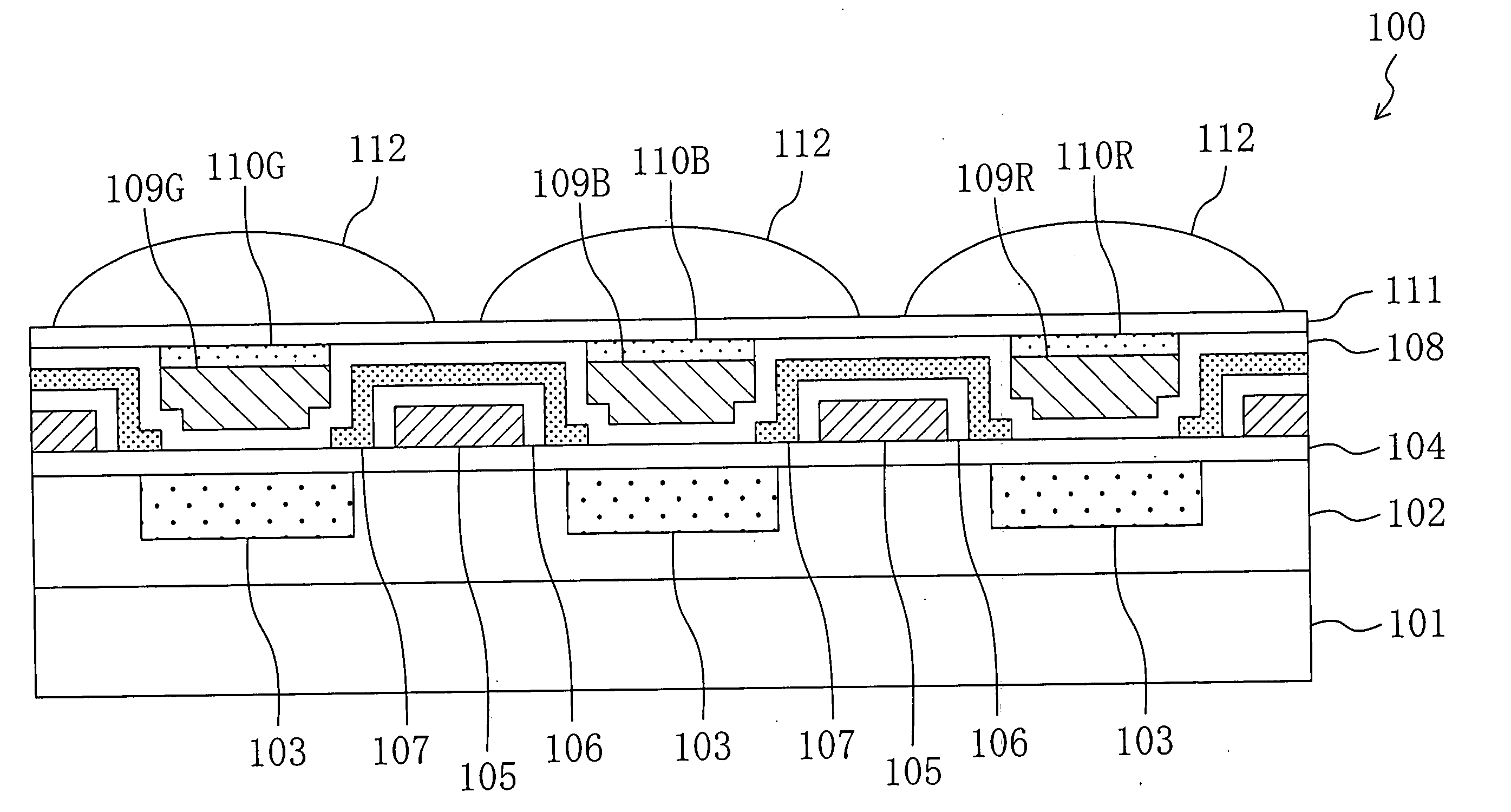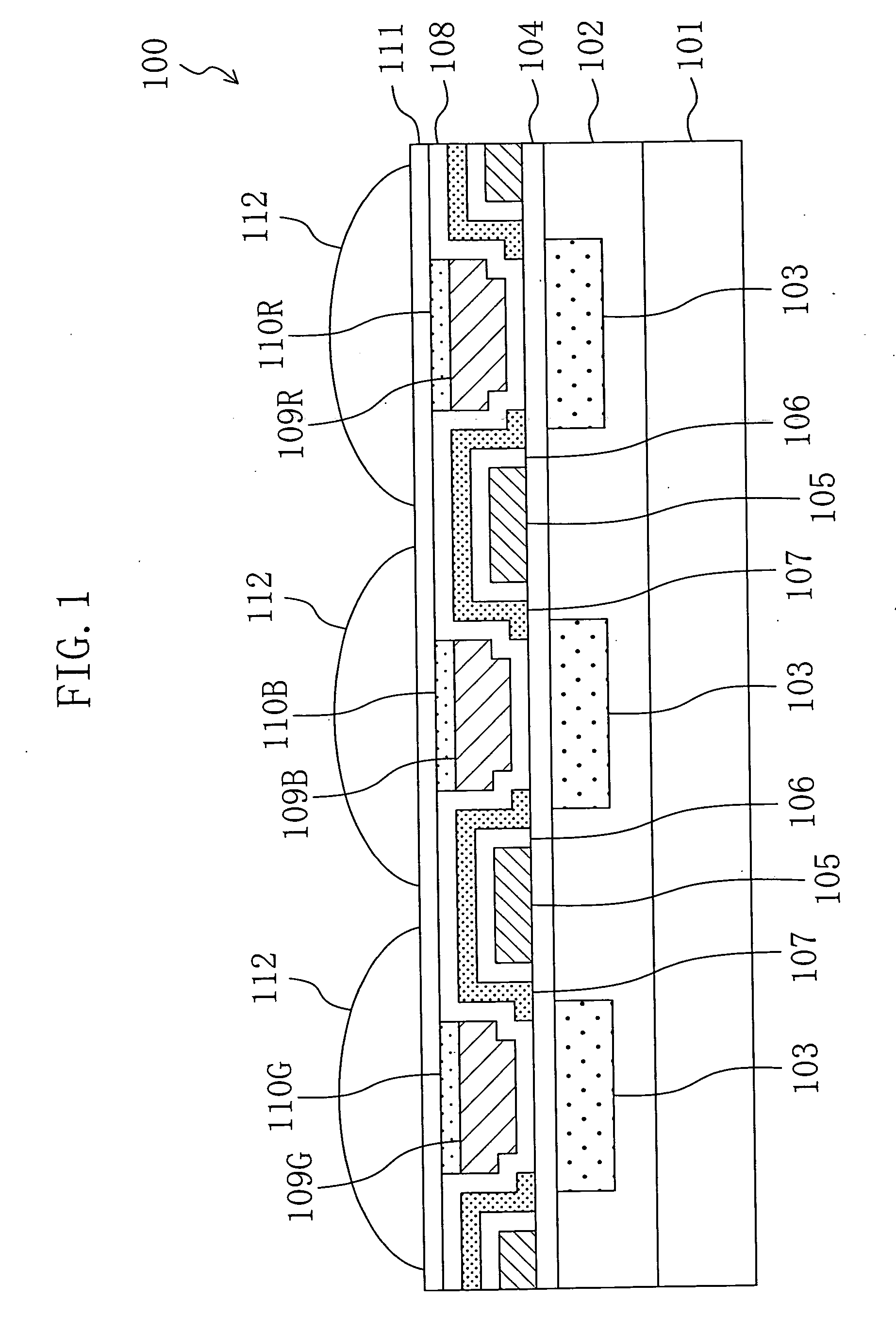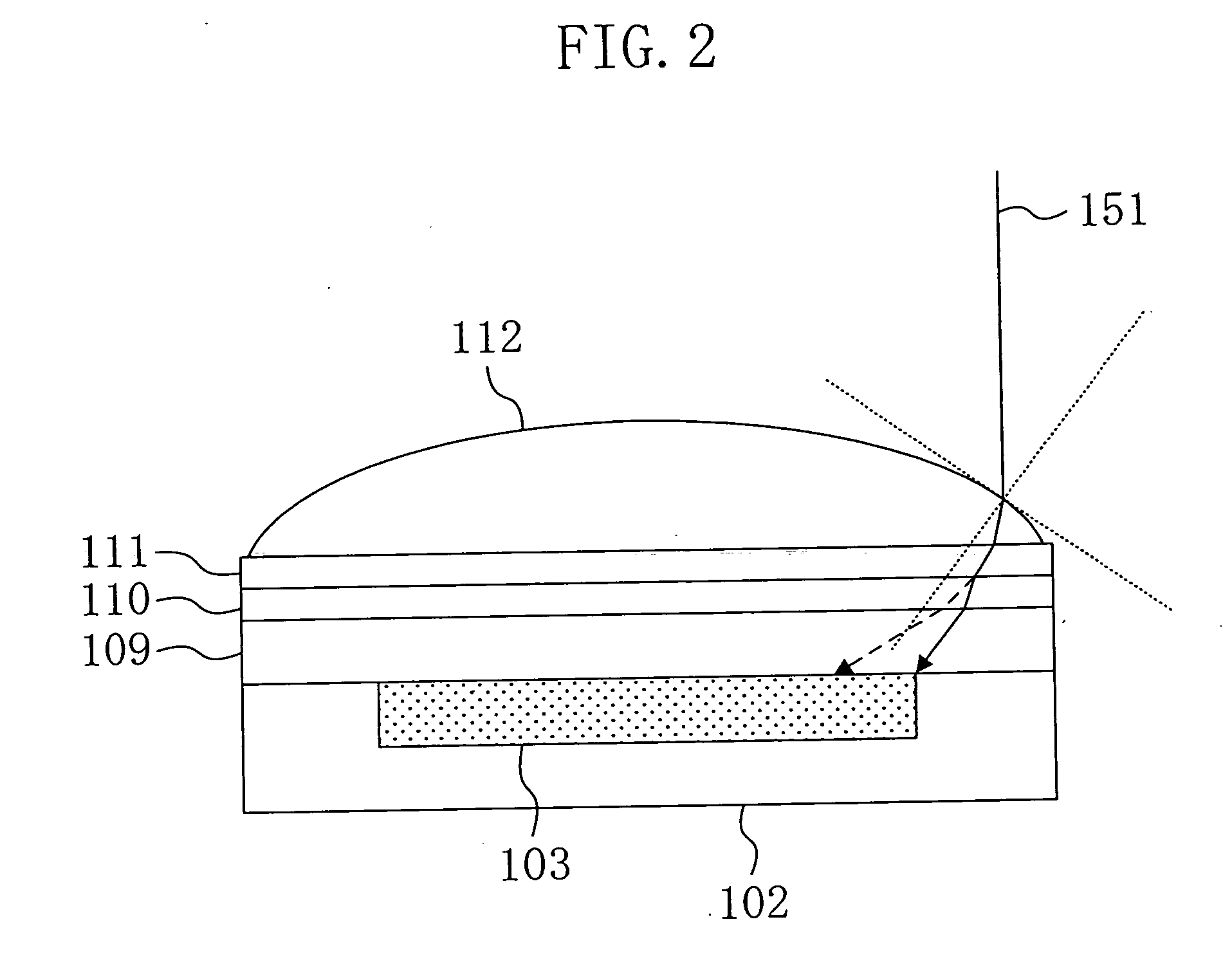Solid State imaging device and method for producing the same
a technology of solid-state imaging and imaging device, which is applied in the direction of instruments, television systems, and details of the television system, can solve the problems of reducing the light receiving area, the reduction of the photoelectric conversion characteristic (photosensitivity), and the conventional techniques cannot meet such severe demands as the reduction of film thickness and miniaturization and dimensional accuracy of the color filter layer, and achieves superior spectral characteristics, high light collection efficiency, and superior durability.
- Summary
- Abstract
- Description
- Claims
- Application Information
AI Technical Summary
Benefits of technology
Problems solved by technology
Method used
Image
Examples
Embodiment Construction
[0071] Hereinafter, a solid state imaging device of the present invention and a production method thereof are described.
[0072]FIG. 1 schematically shows a cross-sectional structure of a solid state imaging device according to an embodiment of the present invention. FIG. 1 shows an area of three photoelectric conversion elements.
[0073] As shown in FIG. 1, the solid state imaging device 100 of the present invention is herein formed using an N-type semiconductor substrate 101 (semiconductor substrate of the first conductivity type). The solid state imaging device 100 includes a P-type well 102 (second conductivity type well) on the N-type semiconductor substrate 101 and a plurality of photoelectric conversion elements 103 (N-type semiconductor regions) on the P-type well 102. It should be noted that, although not shown, the photoelectric conversion elements 103 are arranged in a matrix over the N-type semiconductor substrate 101. According to the present invention, on the contrary, t...
PUM
| Property | Measurement | Unit |
|---|---|---|
| temperature | aaaaa | aaaaa |
| thickness | aaaaa | aaaaa |
| refractive index | aaaaa | aaaaa |
Abstract
Description
Claims
Application Information
 Login to View More
Login to View More - R&D
- Intellectual Property
- Life Sciences
- Materials
- Tech Scout
- Unparalleled Data Quality
- Higher Quality Content
- 60% Fewer Hallucinations
Browse by: Latest US Patents, China's latest patents, Technical Efficacy Thesaurus, Application Domain, Technology Topic, Popular Technical Reports.
© 2025 PatSnap. All rights reserved.Legal|Privacy policy|Modern Slavery Act Transparency Statement|Sitemap|About US| Contact US: help@patsnap.com



